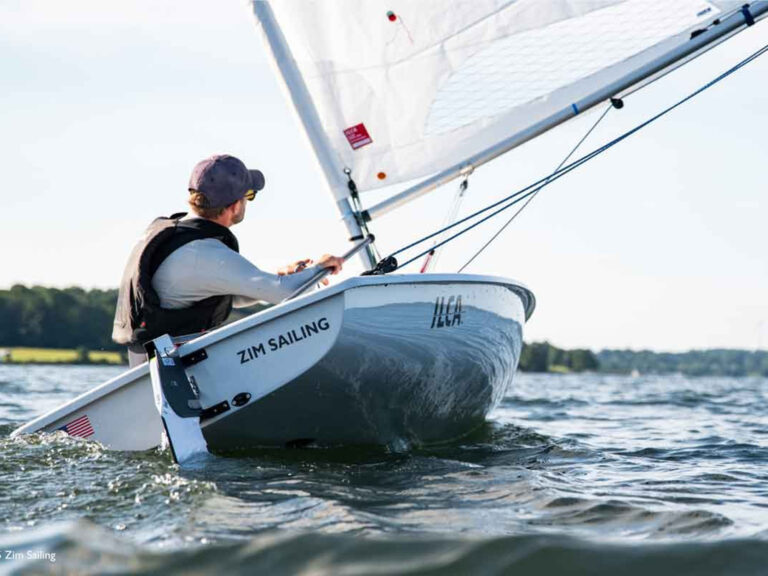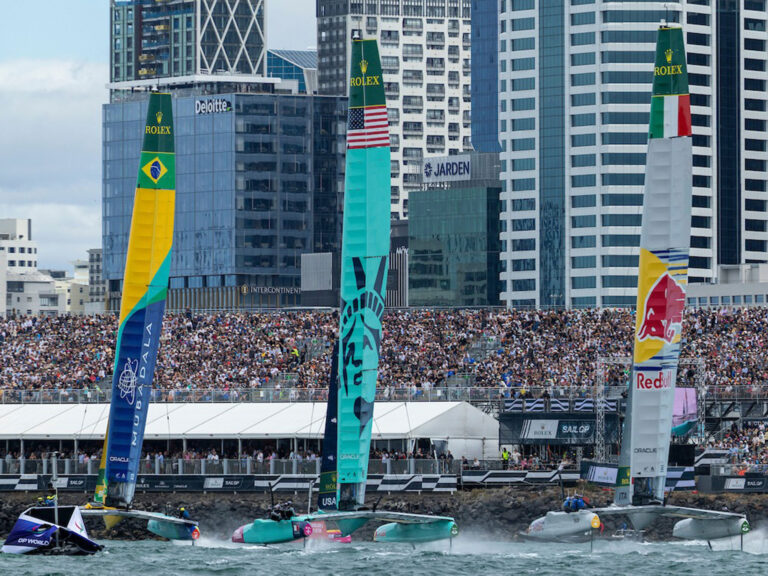One year before the 2003 Americas Cup match, crews are methodically training and naval architects are polishing design details. Teams are being driven hard by syndicate heads who are highly motivated to bring the Americas Cup to their home waters.
The incentive to win is huge, as always: Not only does the victor earn the respect of the world, but also becomes the host of one years training, trials, and the Cup series itself. The economic benefits are considerable. Remote Auckland reaped an impressive positive economic impact in 2000–nearly $250 million for area businesses and $320 million for the country as a whole. In the process, the city waterfront was dramatically improved with the construction of the basin where syndicates and large yachts dock.
In 2003, all 3.8 million New Zealanders expect to again defend the Cup successfully. Thats understandable because in 2000 TNZ made it look easy; but its also less likely this time.
Harking back to the end of the 19th century, several business magnates have succumbed to the lure of the Cup, and most of their teams are outspending TNZ. The most experienced Kiwi sailors from 2000 have joined challenger rosters, and all crews have become familiar with the capricious Hauraki Gulf, wiping out the home-court advantage.
The purpose of the trials is to determine the best team, while honing it to peak performance. The debate is continuing whether the Cup races should be close to the end of the trials so the winner emerges highly tuned or held after a longer work-up period. This time the challengers have leaned toward the latter philosophy, with a long gap after the Louis Vuitton Cup finals (Jan. 11 to 21, 2003) before the start of the Americas Cup (Feb. 15 to March 1, 2003). The timing is a disappointment in the host country. At the height of the New Zealand summer, right after New Years, only two challengers will be left instead of six teams still racing in the semifinals as in 2000. The danger to the surviving challenger is that it risks going backwards during its final prep period.
For the defense, Team New Zealands key player is design coordinator Tom Schnackenberg, whos proven to be the best in the world at this job. He continues his research with the capable American designer Clay Oliver, although without intuitive thinker Laurie Davidson (OneWorld). Gone also are Russell Coutts, Brad Butterworth, and 10 other veterans. The young sailors Dean Barker and Cameron Appleton have demonstrated world-class capability on the racecourse, but they have big shoes to fill. One of Coutts greatest strengths during his campaigns with TNZ was his engineering background, which allowed him to interface with the design team.
The New Zealand dollar has tumbled on the world market, tightening TNZs budget. But sailing in their home waters and starting out with the fastest boat from 2000, TNZ will surely be a formidable defender.
In attempting to size up the challenging syndicates (see sidebar), I look for harmony in the afterguards, cooperation between design teams and sailors, efficient use of funds, smooth syndicate management, and match-racing success by leading sailors. The chances are high that at least one challenger is currently building a breakthrough, but based on the fundamentals Ive mentioned, my early prediction is that the six semifinalists will be Oracle Racing, OneWorld, Stars & Stripes, Alinghi, GBR Challenge, and Prada. In the Louis Vuitton Cup final Stars & Stripes will face Alinghi in a close contest, and the winner will defeat TNZ.





